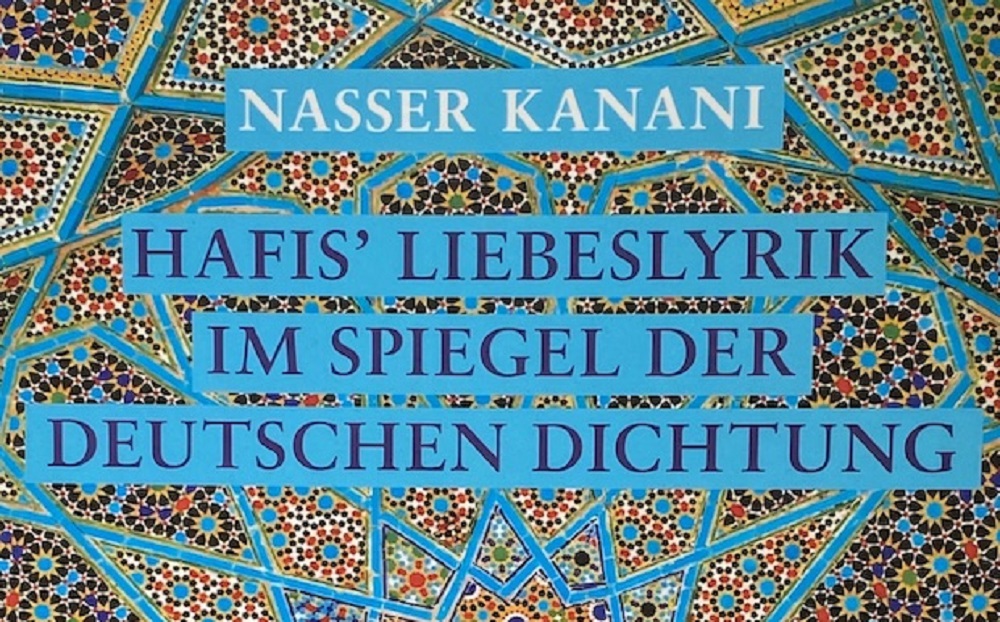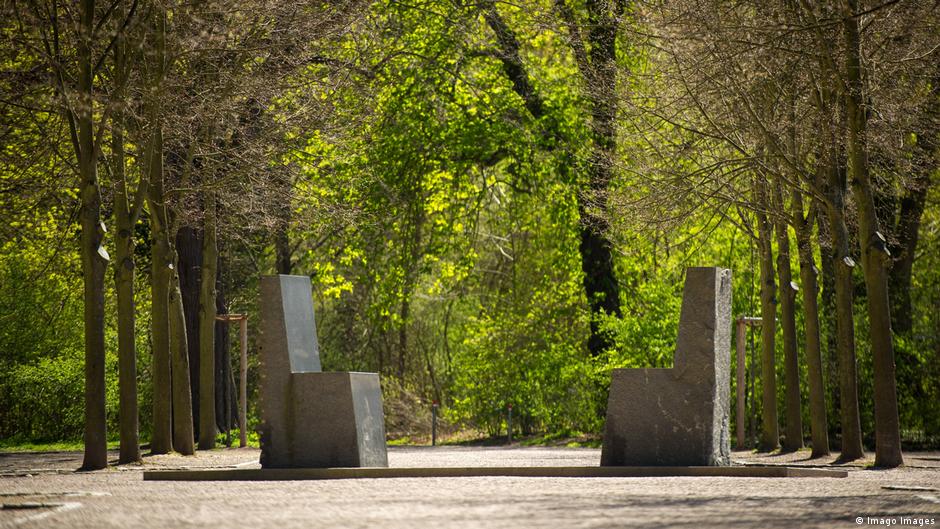Roses from Shiraz: German devotees of Hafez

The Goethe-Hafez monument in Weimar: two granite chairs stand opposite each other, a symbol of dialogue, exchange, and friendship. Two writers who were ahead of their time, whose works are timeless, classics of world literature. ‘May the rest of the world fall, Hafez, you, you alone are my only rival!’, Goethe writes in West-Eastern Diwan.
We have Joseph von Hammer-Purgstall and Friedrich Ruckert to thank for the fact that Hafez’ verse is available in German. Their pioneering work was followed by numerous other translations all the way into the 21st century. Various translators have taken different approaches to the Bard of Shiraz, and readers who aren’t fluent in Persian can now enjoy a whole load of parallel translations, to get a sense and, soon, understand why Hafez’ Divan can now be found in every Iranian home, why it is consulted and its verse interpreted before making any major life decision, why the fascination that his poetry provokes is still relevant almost 700 years since he walked the Earth, and still has something to teach us.
And even though Goethe’s West-Eastern Diwan is excellent, he wasn’t, after all, the only German writer who got to grips with Hafez. Hafez introduced us to the ghazal and inspired hundreds of writers to try the art of Persian poetry. So many ghazals have been translated into German since that it is amazing that the form doesn’t share an equal footing with the sonnet in German classes today.
A comprehensive compendium
Nasser Kanani, who published Hafiz: The Persian Tongue’s Greatest Poet, a deeply knowledgeable book on the poet’s life and work, in 2019, has now set his sights on Hafez’ influence on German literature, with a follow-up volume titled The Love Poetry of Hafez through the Lens of German Literature: Hafez and his German Devotees.

Who are these devotees? Goethe, of course, and Ruckert, Hammer-Purgstall, and Vincenz von Rosenzweig-Schwannau, who published an early and significant translation of Hafez’ Divan. But that’s merely scratching the surface. Kanani pored over books, rummaged through libraries and archives and found 126 writers who, over the last three hundred years, had translated Hafez and been inspired by him, dedicated poems to him, experimented with his forms and imagery or, at the very least, mentioned him. He has produced an extensive and probably near-comprehensive compendium which not only succinctly profiles these 126 writers (tackling the more significant among them in greater detail), but also includes a great number of poems, as well and translations and – yes – supposed translations which are, at best, very free renderings.
Take, for example, a translation by Georg Friedrich Daumer, who is still occasionally referred to as Hafez’ chief translator, even though he couldn’t read Persian: his ‘translations’ are adaptions of Ruckert and, it must be said, not good ones. At least not if you’re expecting them to provide an insight into Hafez’ poetry. Daumer’s ‘free rendering’ has left some ghazals ‘practically unrecognisable’, by Kanani’s assessment, and he also quotes Friedrich Rosen, who took a similar view: ‘There’s been no shortage of attempts to make him [Hafez] palatable to German tastes. Unfortunately, some of these ‘adaptations’ can only be described as audacious forgeries. They’re written by people who can’t read a sentence of Persian, let alone understand Hafez.’
It’s reminiscent of the far more recent case of the U.S. poet Daniel Ladinsky, who passed his own poems off as Hafez translations, only for them to then be translated into German and be sold as translations of Hafez (current editions still carry the disclaimer, ‘poems inspired by Hafez’). However, anyone who has spent five minutes reading Hafez would struggle, in all seriousness, to take Ladinsky’s horribly simple verse for Hafez’ work. But the case was different for Daumer.
The reason behind Hafez’ popularity
There are two crucial reasons why Hafez was handed around with such enthusiasm in the 19th century specifically: for one thing, he was new to German audiences, who were now able to read him for the first time, as he had previously only been available to readers of Persian. It was also a time of hopeless romanticisation of the East. Relatively little was known about ‘the Orient’, and a largely skewed image was derived from the few available travelogues and reports, soon transforming it into an object of longing.

Only few intellectuals, such as Goethe, Ruckert and a handful of others, dared to engage intensely with the countries, languages and religions of the Middle East. Others occasionally wrote rough ghazals, as was the fashion. The writer Karl Immermann sharply criticised this in 1829, speaking of ‘a productive appropriation of materials brought to us from the Orient. (…) However, much is presented simply as poetic nomenclature. (…) The trivial concept of hiding worn-out ideas behind foreign and new-sounding words, or behind an exotic form.’ Immermann then wrapped up this biting yet apposite critique in a poem. And it may well be noted that, to an extent, the criticism still stands to this day.
At times, bitterly cantankerous arguments would break out between poets regarding the question as to whose ghazals were any good, and whose weren’t, and you would have taken the wind right out of their sails by saying, ‘Friends, you write wonderful poetry, but when compared to Hafez, you can only lose!’ – which just went to show that the vast majority of them already knew it.
Friedrich Bodenstedt has worked on his translations and adaptions for almost a lifetime; his renderings of Hafez are well worth reading, particularly as he has often tried to unite both an artful, German form with translations that are as faithful as possible.
What Kanani has put together is a selection of source material that is incredible in its scope and which encompasses cross-references to Hafez settings by German composers as well as short outlines of Persian mythology, helping the reader make better sense of certain themes and imagery that crop up time and again. Hafez’ German devotees are a previously little-explored aspect of German literary history and the German-Persian dialogue, which is why this book is particularly recommended for laypersons with an interest in poetry. Any student of German Studies or Persian Studies will soon find this book indispensable. It fills a considerable gap.
Translated from the German by Ayca Turkoglu
You may also like:
150th anniversary of Friedrich Ruckert′s death: Forget Goethe, read Ruckert
Five Farsi novels and their impact on Iranian pop culture
Iranian literature – the censor’s mindset
Persian poetry as reflected in German Romanticism
Iran′s image in the West: Sheer incredulity
Abdo Abboud: "Translation is the most important channel of intercultural dialogue"